Pattern Plates Selection Guide
Choosing the right pattern plate for your project requires the answer to four simple questions.
Question #1 - Aluminum or Dowmetal?
Aluminum
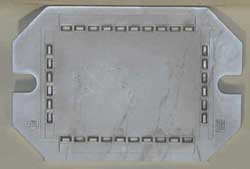
- less expensive than dowmetal
|
Dowmetal (Magnesium)
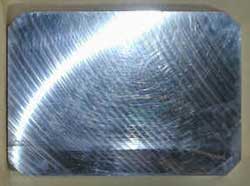
- 1/3 lighter than aluminum
- higher tolerance (flatter) and stronger than cast aluminum
|
Question #2 - Do you require built-in registration locks?
Registration is how one mold half (i.e. cope half) will "lock" itself in place with the other half (i.e. drag half). If you require registration on your plate, you have three choices:
|
Chainlock
(Aluminum only)
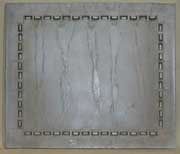
|
Offset
(Aluminum only)
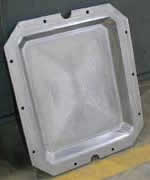
|
Matchlok
(Dowmetal only)
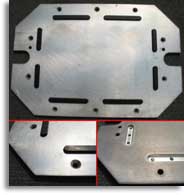
|
|
A series of teeth completely surrounding your pattern with the exact opposite pattern appearing on the underside.
|
The entire middle of the plate is offset, creating a natural lock when mold halves are created on each side.
|
Very durable urethane strips surrounding your pattern, with corresponding indentations on the underside of the plate.
|
Flat
(Aluminum or Dowmetal)
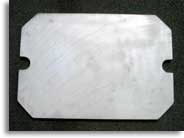
|
If you do not want built-in registration, you may choose a flat aluminum plate or flat dowmetal plate. With a flat plate, registration may be added later with mold lock buttons (below left), matchlock buttons (middle) or Adolf anti-shift inserts (right).
  
|
Question #3 - What must the overall shape of pattern plate be?
The shape of your plate is determined by what type of Automatic Mold Machine you are using. If you are not using an automatic machine (and instead the jolt-squeeze process), you can choose the standard ear configuration or the insert plate, which enables you to have an interchangeable cope or drag.
|
Hunter
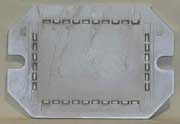
|
Beardsley-Piper
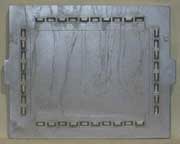
|
Robert Sinto

|
|
Standard Ear
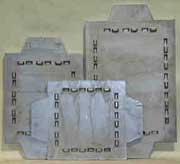
|
Insert Plate
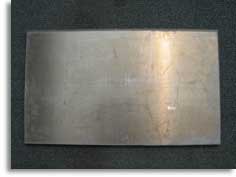
|
Question #4 - What size and thickness is required?
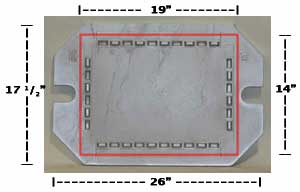 |
Most pattern plates are available in various thicknesses ranging from 3/8" to 1" and various flask sizes from 14" X 19" to 30" X 32". Actual size and availability will depend on which style of plate you are ordering.
Note that your flask size (ex. 14 X 19 on the diagram to the left) will be smaller than the overall dimensions of the pattern plate.
Custom sizes and configurations are available (minimum order required).
|
Continue to the Freeman/Palmer Line of Pattern Plates
|















